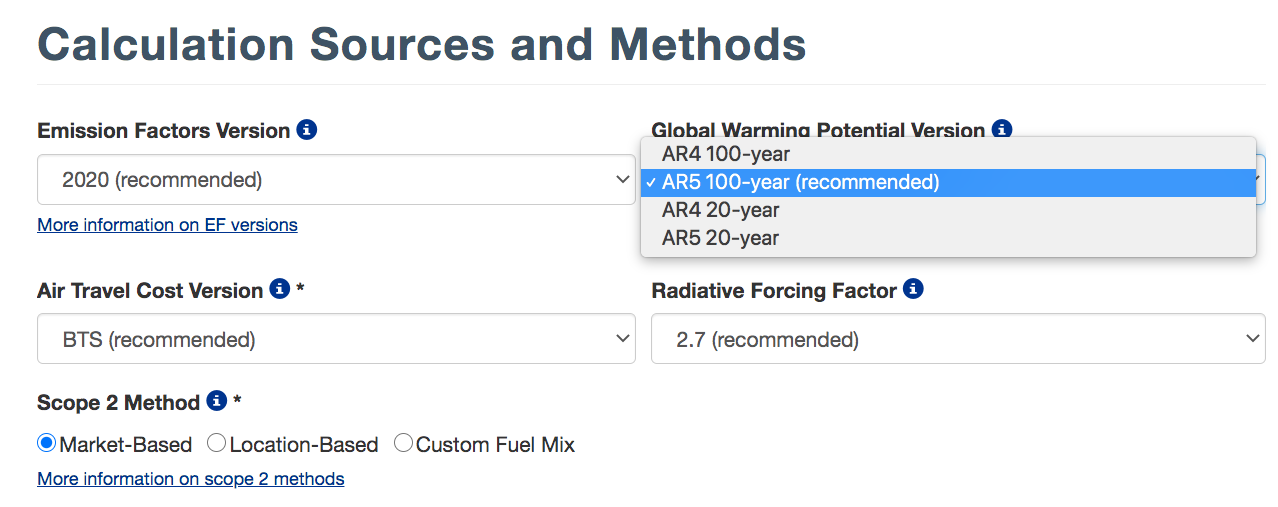What is the difference between the 100-year and 20-year global warming potential?
The 100-year global warming potential (GWP) describes the warming effect that greenhouse gases will have in the atmosphere over a 100-year time period. Similarly, the 20-year GWP describes the warming effect that greenhouse gases will have in the atmosphere over a 20-year time period.
Most greenhouse gas inventories use 100-year global warming potentials (GWPs), and the AR6 100-year GWP version is the standard recommended version in SIMAP. However, more recently, there has been increasing interest in shorter term estimates of global warming due to the urgency of climate action. The 20-year GWP is a different and additional option that provides a shorter term estimate of the warming effect from your emissions, which is important for shorter lived greenhouse gases like methane.
100-year and 20-year GWP comparison
| 100-year AR6 GWP | 20-year AR6 GWP | |
| Carbon dioxide (CO2) | 1 | 1 |
| Methane (CH4) | 28 | 81 |
| Nitrous oxide (N2O) | 273 | 273 |
Note: CO2 is 1 for both 100-year and 20-year GWPs because all other greenhouse gases' global warming potential is normalized to CO2
Because CO2 makes up the majority of most greenhouse gas inventories, you likely will not see a very large change in your net footprint when changing between 100-year and 20-year GWPs.
Where can I select my GWP version in SIMAP?
You can select the GWP version on the Data Mgmt tab. We currently offer six options:
- AR4 100-year
- AR5 100-year
- AR6 100-year (recommended)
- AR4 20-year
- AR5 20-year
- AR6 20-year
AR4, AR5, and AR6 refer to their respective Assessment Report versions of IPCC reports. All reports included comprehensive lists of global warming potentials. We recommend the more recent report (AR6) because GWPs do actually change for two reasons:
- An improved scientific understanding of the 20-year and 100-year global warming effect of different greenhouse gases
- As the concentration of the atmosphere changes, the global warming potential of gases can also change

Do I need to pick either the 100-year or 20-year GWP for my reporting?
GHG reporting conventions (for Second Nature, AASHE, CDP, ISO, and every other major reporting platform) recommend that you calculate your footprint using the 100-year GWP. If using the 20-year GWP changes your results significantly, informs your perspective on future planning, or presents a learning opportunity for your campus stakeholders, then we suggest that you ALSO consider including the 20-year GWP results in your report. If you include the 20-year GWP result, then be sure to incorporate a narrative about short-term versus longer-term impacts.
What data sources are used to collect the GWPs used in SIMAP?
We collect global warming potentials for all greenhouse gases in SIMAP from the following two data sources:
- IPCC Assessment Report 4, Assessment Report 5, and Assessment Report 6
- Greenhouse Gas Protocol
- Climate Registry
You can view the global warming potential for all greenhouse gases in SIMAP on the Global Warming Potential page. Note that this page will display the GWPs for whichever GWP version you have selected on the Data Mgmt tab.

